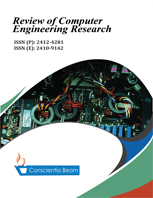Increasing the radar cross section using phase array antenna in the body structure of miniature air-launched decoy platforms
DOI:
https://doi.org/10.18488/76.v10i1.3308Abstract
Decoys have a crucial role in the electronic countermeasure and deception concepts, and many works and developments have been realized over the past few decades. The most impressive one is the miniature air-launched decoy (MALD)s. They are used to give the impression of an attack in enemy airspace by imitating the fighters' radar signatures and flight profiles. However, they resemble the emission of the fighters; their radar detection probabilities are lower than fighters due to their low radar cross-section (RCS)s. This situation results suspiciously and provides a basis for discriminating a MALD from a fighter. Thus, the emission and the MALD system's RCS must resemble a fighter. This study presents a method for increasing the RCS of MALD systems by using phased array antennas. So, a different approach is developed for covering the surface of the MALD platform with a phased array antenna with using ANSYS High Frequency Structural Simulator (HFSS) program. The phased array antenna structure analysis for different radiating elements has been conducted on the ANSYS HFSS program. A microstrip antenna, a dipole antenna, and bow tie antenna structures were analyzed, and the results were compared. The antenna structure with the best results was decided and applied to the missile. The increased MALD system's RCS has been compared with the fighter's RCS, and satisfactory results have been obtained.





